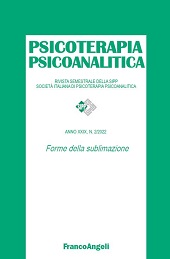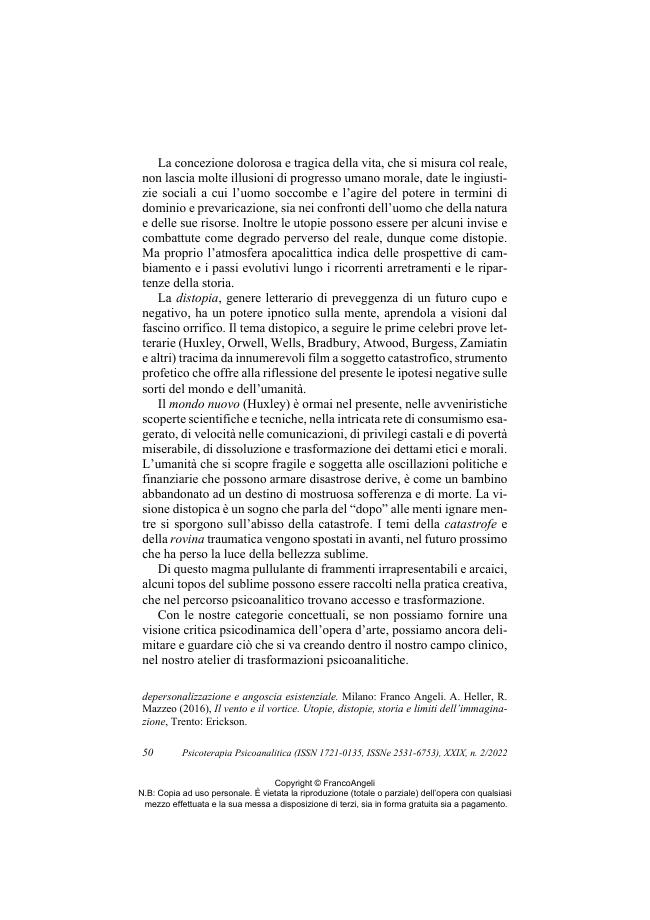Sublime distopico
P. 44-56
L'articolo vuole evidenziare il sublime distopico, la fascinazione della paura e del dolore, spaziando tra l'arte che ha dato visioni estetiche al sublime e la psicoanalisi che lavora con le derive distopiche della sofferenza. Tracciando un breve excursus del sublime nell'arte, il tema psicoanalitico della sublimazione viene collegato alle forme nega-tive della visione distopica della sofferenza rappresentata nell'arte. I traumi emergono in forme e stili che fanno del particolare, del frantu-mato, del materico, del disgregato, un manifesto programmatico artistico contemporaneo.
La distopia si mette in relazione con la concezione dolorosa e tragica della vita e la porta ad estreme conseguenze nella vi-sione del futuro, esasperando paure e pericoli già esistenti nel passato. Nello scritto, attraverso una breve storia clinica, si riflette su come cambia il passato, guardandolo dalla distanza di una profonda rielaborazione analitica che, come una sonda, lo riesamina e ne risente gli echi. La visione distopica del futuro sarà ancora una traversata del deserto, avrà ancora i caratteri del sublime pauroso o ritornerà, trasformato, su dimensioni meno disarmoniche? [Testo dell'editore]
The article aims to highlight the dystopian sublime, the fascination of fear and pain, ranging from art that has given aesthetic visions to the sublime and psychoanalysis that works with the dystopian drifts of suffering. Tracing a brief excursus of the sublime in art, the psychoanalytic theme of sublimation is connected to the negative forms of the dystopian vision of suffering represented in art. The trauma emerges in forms and styles that make the particular, the shattered, the material, the broken up into a contemporary artistic programmatic manifesto.
The dystopia relates to the painful and tragic conception of life and takes it to extreme consequences in the vision of the future, exasperating fears and dangers already existing in the past. In the paper, through a brief clinical history, he reflects on how the past changes, looking at it from the distance of a profound analytical reelaboration, which reexamines it like a probe and feels the echoes. Will the dystopian vision of the future still be a crossing of the desert, will it still have the characteristics of the sublime fearful or will it return, transformed, to less disharmonious dimensions? [Publisher's text]
Is part of
Psicoterapia psicoanalitica : 2, 2022-
Articles from the same issue (available individually)
-
Information
ISSN: 2531-6753
KEYWORDS
- Sublime distopico, estetica del sublime, distopia, sublimazione
- Dystopian sublime, aesthetic of sublime, dystopia, sublimation



